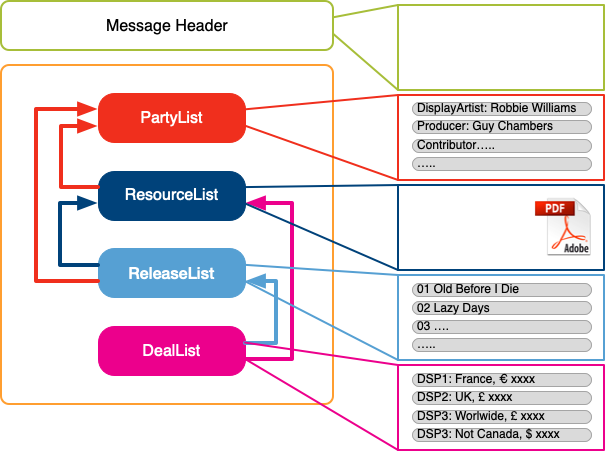ERN 4 structure
The NewReleaseMessage includes complete data about releases and all resources contained within those releases. In addition, it includes deals that describe when, where and how the release can be made available. The specification for the NewReleaseMessage is available here.
The NewReleaseMessage consists of eight individual sections of message and metadata elements that are interrelated. The diagram above shows only five of these, as they are the most important and commonly used. The other three sections are:
CueListwhich is most relevant for audio-visual resources or where a recording contains another recording;ChapterListwhich enables the annotation of chapters in resources, such as audio books; andSupplementaryDocumentListwhich enables a message sender to signal that additional documentation is available relating to the release metadata contained in the message.
A NewReleaseMessage should only contain the details of an individual release (e.g. album, single, bundle) and each of its components (e.g. sound recordings). The message should not contain data about multiple releases whether they are related or not.
The five main sections of the NewReleaseMessage are described below.
